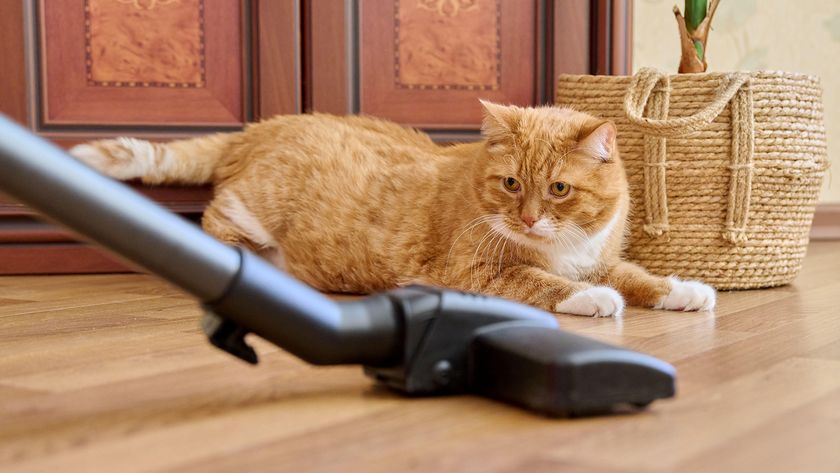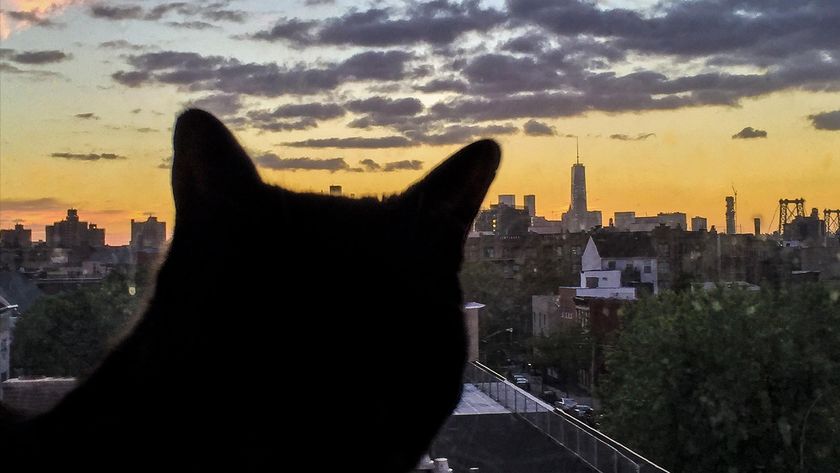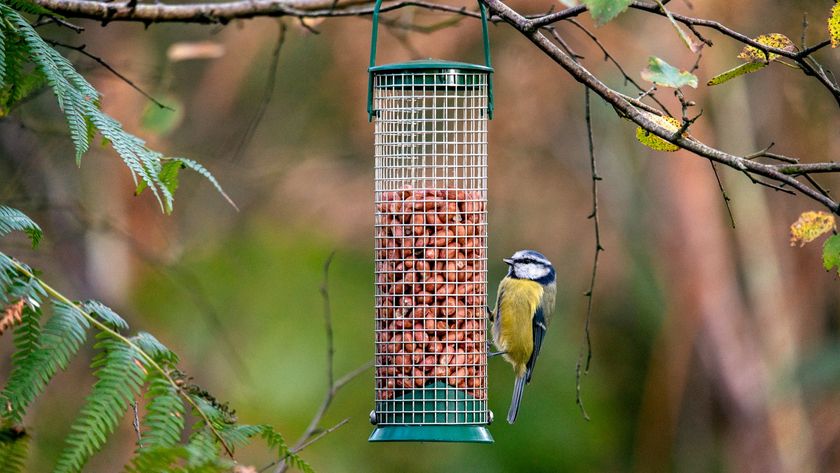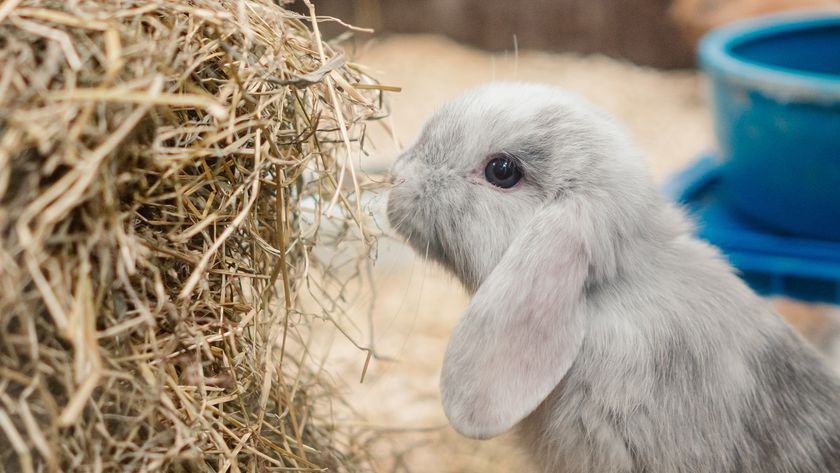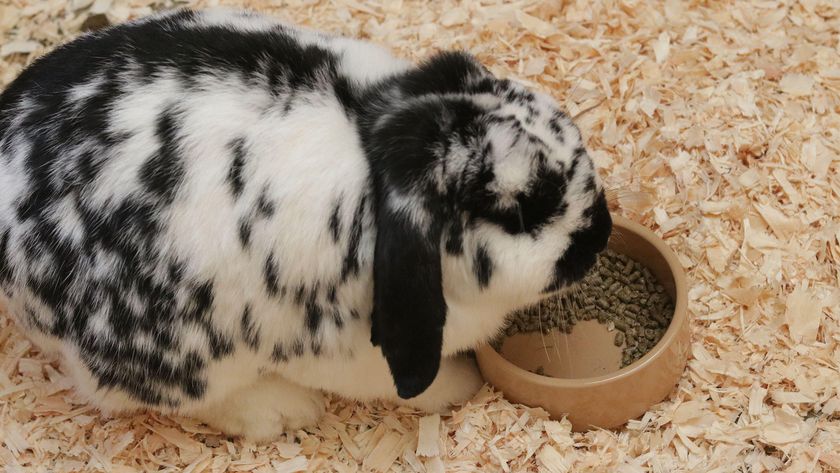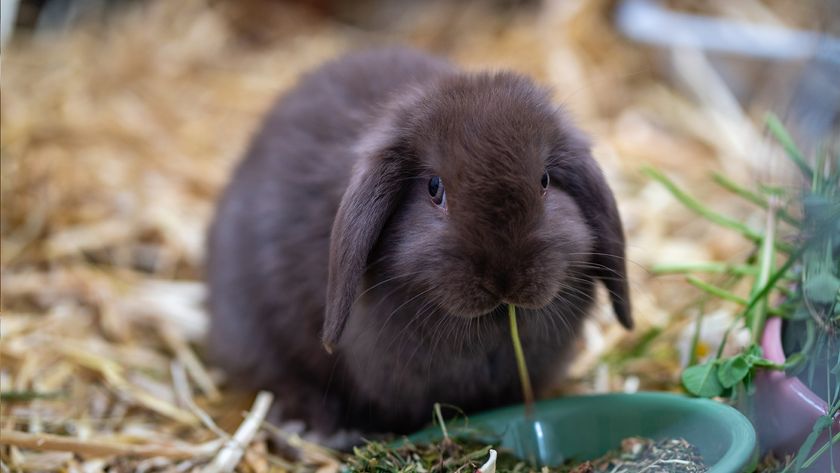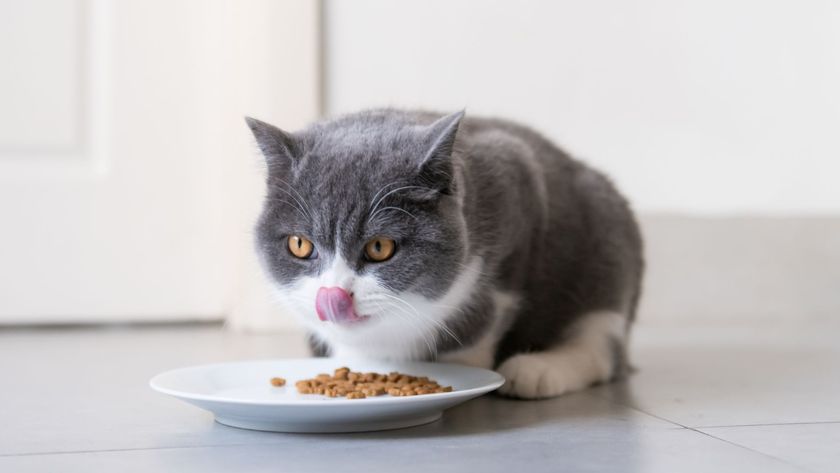Best cat nail clippers 2025 to keep claws well trimmed
The best cat nail clippers will keep your cat's claws under control, and protect those carpets!
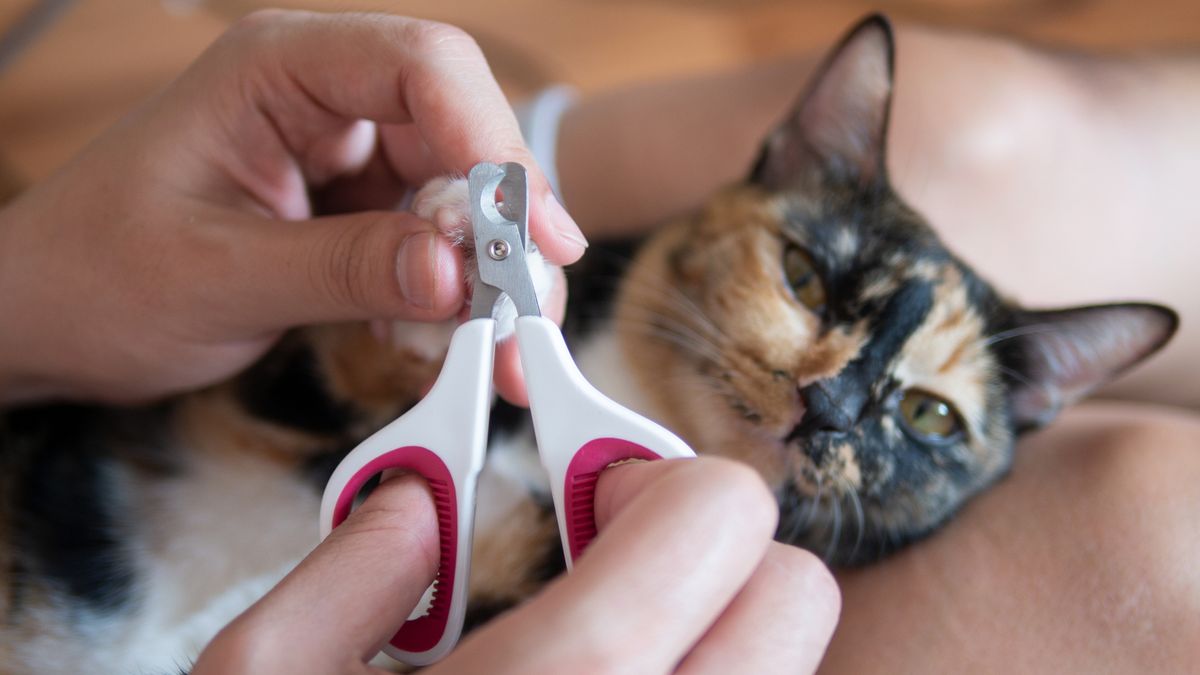
Protect your furniture, clothing, and skin from your feline’s ferocious claws with the best cat nail clippers. The best cat scratching posts are a good recommendation, as they give your cat somewhere to direct that energy… some of the time. The only foolproof solution, however, is to trim your cat's claws yourself, and that’s where the best cat nail clippers come in.
These handy tools are tailor-made for cutting through the tough keratin without causing any distress to your cat. They have thinner blades than scissors, so you can see exactly what you’re doing. Even with a pair of the best cat nail clippers, you’ll need the right technique, so check out our guide on how to clip your cat’s nails. You can also consult with your vet, and even get them to trim your cat's claws so you can see how it’s done.
The best cat nail clippers 2025
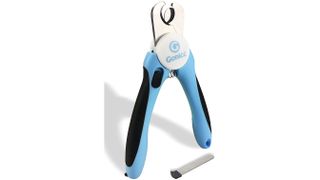
Best overall cat nail clippers
Strong, sturdy, safe, and straightforward sums up these nail clippers perfectly. Ergonomically designed and lightweight, they fit comfortably in your hand, ensuring a firm and solid grip thanks to the non-slip material on the handles.
This clever design complements the durable stainless steel blades which cut through even the thickest of nails with little fuss. These clippers also come with a built-in nail file, allowing you to remove any remaining rough edges after you’re done clipping.
The back of the blades also have a safety stop guard which helps you avoid over-cutting. As a final safety feature, you can also lock the blades closed (though we’re not overly impressed by the locking mechanism).
Reasons to buy: They offer a comfortable and secure grip, clean and precise cuts, and even have a file for final finishing.
Reasons to avoid: The locking mechanism feels a bit flimsy.
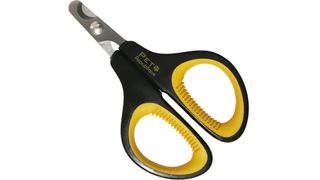
Best budget cat nail clippers
This tiny pair of cat nail clippers comes with an equally tiny price, making it perfect for cat grooming on a budget. Despite the low cost, you’re not losing out on quality as they're well-built and come with an impressive ten-year warranty.
The stainless steel blades aren’t very long, but they’re still relatively thick and sharp, making it easy to get a clean cut. The soft grip handles feel surprisingly comfortable in the hand, letting you concentrate and helping to avoid accidents.
They are positively tiny though, weighing just 1.12oz and coming in at under 5in in length, so they’re not going to be suitable for users with big hands. The short blades also won't work well for larger cat breeds like Maine Coons.
Reasons to buy: They’re incredibly affordable but still offer excellent build quality, with comfortable handles and sharp blades.
Reasons to avoid: If you have large hands, you’ll struggle to use these diminutive clippers. They’re also too small for large cat breeds, so we’d only recommend them for kittens and smaller cats.
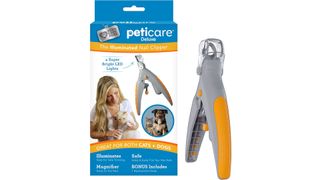
Best versatile cat nail clippers
Take the dread out of clipping your cat's nails and get a professional finish with thess illuminated nail clippers from PetiCare. They feature four super-bright LED lights to illuminate the bloodline of light-colored nails. This is the blood supply for your cat’s claws – better known as the "quick" – and accidentally cutting it can cause bleeding and pain for your feline friend.
There's also a small 5x magnifying lens to make it easier to see what you're doing. It even doubles up as a nail trapper, so your cat's claws don’t fly all over the place.
The clippers have wide, comfortable handles that are easy to grip. The durable stainless blade is integrated into the body, and a quick-release blade replacement lever makes it easy to replace the blades when needed – a replacement is included.
Reasons to buy: It’s a premium product with LED illumination, a magnifying lens, replaceable blades, and even a cutting catcher.
Reasons to avoid: The light won’t help on dark nails, and you’ll need to replace the batteries – a hassle most clippers don’t include.
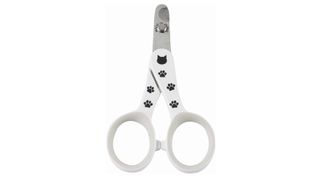
Best cat nail clippers for accuracy
These adorable-looking clippers are expertly crafted in Japan and made from stainless steel from Seki City, home to some of Japan's most celebrated swordsmiths for over 800 years. The result is extra-sharp blades made from high-quality metal, which means they’ll give nice clean cuts and stay sharper for longer than your average set of clippers.
Another benefit of the high-quality steel is that the blades are 30% thinner than those on conventional clippers. This means you’ll be able to see the ‘quick’ of your cat's claws more easily, leading to a more accurate cut and less stress for you when doing the job. You’ll need to buy a separate nail file for finishing the cuts though.
The handles are cushioned and non-slip to give added security when using them. They're reasonably comfortable to use, but the small frame means even those with dainty hands will only be able to get a single finger through the handle holes (and if you’ve got larger hands, forget about it – these aren’t the clippers for you).
Reasons to buy: These stylish clippers have thin, durable blades that make precise cuts a breeze.
Reasons to avoid: The lack of a built-in file is a shame, and they’re not great for users with big hands.
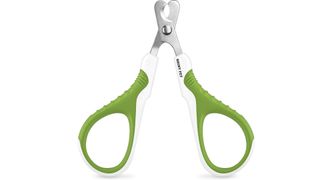
Best kitten nail clippers
If you have a cute little kitten, you don’t want a great big pair of clippers to hack away at their nails. These dainty clippers are ideal, but the handles are still a decent size and have textured grips so they’re not a nightmare to hold.
They have small semi-circular blades to ensure a clean, precise cut, with no ragged edges. The diminutive blade design means the nail is always visible, so you can always keep an eye on what you are doing and avoid painful accidents.
As a final touch, Shiny Pet also provides an instructional eBook to guide first-timers. Simply scan the QR code on the back of the packaging to download.
Reasons to buy: Ideal for kittens, as the smaller blade profile suits their tiny adorable claws.
Reasons to avoid: They’re not ideal for users with large hands, and the small blades won’t suit bigger cats either.
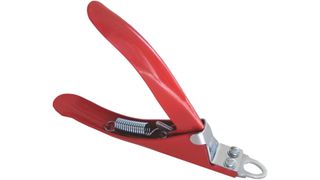
Best guillotine cat nail clipper
The original guillotine-style nail trimmer, Resco has been making these high-quality cat nail clippers since 1937. Made from American steel, these premium clippers are manufactured in Detroit, Michigan and each one is hand-tested for quality before shipping. The super sharp, micro-honed blades are replaceable too, so when they do eventually wear out you can just swap in a new set, prolonging the life of your clippers.
The handle has a distinctive appearance thanks to the red powder coating, resulting in a comfortable and firm grip in the hand. You can also upgrade to the deluxe grip version if you want an even nicer feeling set of clippers.
Resco is extremely confident in its products, offering a lifetime warranty on the clippers for your peace of mind.
Reasons to buy: These premium clippers are built to last, offering excellent build quality. You’ll also be supporting US-made products.
Reasons to avoid: They’re on the expensive side of pet clippers, and guillotine-style clippers feel strange for some people compared to traditional scissor-style.
How to choose the best cat nail clippers
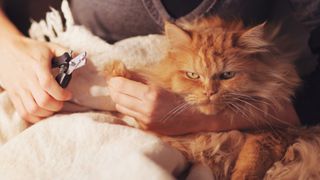
When it comes to choosing the best cat nail clippers, there are several key features that you should be on the lookout for. There's not one set that's right for everyone though, so it's important to get the right tool for your pet.
Size and ease of use
Cat nail clippers come in different shapes and sizes, much like your feline friends. If you have a kitten, you want a pair of clippers specially manufactured for small pets. These will be smaller in size and have blades tailored for cats with smaller claws. These have smaller handles so can be more difficult to use for larger hands, so make sure that the handles are non-slip, and will give a safe strong grip. Larger clippers – as you might expect – are commonly tailored for fully grown cats. Again, make sure that the handles provide a sure grip and fit neatly into the palm of your hand. No owner wants to slip when cutting and trimming claws.
Blade quality and style
The blade is the most important part of any cat nail clipper, so you need to make sure that you have a strong, long-lasting, and rust-free blade. The popular – and recommended – choice are clippers with a stainless steel blade. Most blades will last a good few years, but consider clippers with changeable blades. When they do start to dull, just change the blade rather than buying new clippers.
Blades come in two styles: flat and angled. Both work equally well, but an angled blade may make it easier when trimming.
Bonus features
Basic cat nail clippers do the job you expect, but if you want to make the whole cat-clipping experience less stressful and pamper your feline friend a little more then think about some extras. Some clippers come with lights and a magnifying lens to help you see your cat's claws better. You can finish a cut with a file for a smoother and more aesthetic finish. You can go manual with a simple nail file, or splash out on an electric trimmer to finish the job. For safety reasons, consider a clipper with a guard to protect the blade when not in use.

What type of nail clippers are best for cats?
While it may be tempting to just whip out a pair of scissors or nail clippers that you already own, if you’re going to clip your cat’s nails at home, you should use the proper tools for the job. We spoke to expert vet Dr Rebecca MacMillan to find out what you need to look out for.
Even if you already own a pair of pet nail clippers for a larger pet, Dr. MacMillan warns that “it is always best to use nail clippers that are either designed either for cats or for small dogs. Using large dog nail clippers is not a great idea, as these won’t allow you to cut with the precision you need.”
If you use a pair of clippers that’s too large, you could end up accidentally “taking too much off and cutting into the sensitive quick of the nail” which will lead to bleeding and pain for your poor kitty.
In a pinch, Dr. MacMillan says that it’s OK to use human nail clippers for cats, but you’ll need to adjust your angle of attack to avoid “crushing the nails”. Given how affordable cat nail clippers are though, we’d really recommend just buying a pair that is specifically designed for the task.
Guillotine vs scissor-style clippers
When it comes to which type of cat nail clippers you should go for, there are two main styles: scissor and guillotine. Scissor clippers are the most common style and work as you’d expect, with a scissor-style cutting action on a thick, curved blade.
Guillotine-style clippers are made from a metal loop or hole that you slide the cat’s claw through, at which point you squeeze the handles together to bring a blade down across the loop, clipping the section of claw that’s sticking through it. Some people find these clippers more comfortable and easier to use, and they’re typically quieter than scissor clippers, which is great for nervous pets who don’t like loud noises.
Both styles can work great for cats as long as they’re well-maintained with sharp blades. Whichever option you go for, Dr. MacMillan says to look for a “robust and sturdy design, ideally with non-slip and easy-to-hold handles”.
She finishes up by saying that if you’re unsure, you should “ask your vet or local pet groomer what type of nail clippers they work with and see if you can purchase something similar.”
Why do cats have claws?
Cats are predators with razor-sharp claws to help them catch prey and fend off attackers in the wild. Humans may have domesticated house cats and turned them into our cuddly companions, but these claws have remained. Without these natural hunting activities to wear down their claws, your cat will turn to household objects – namely carpets, furniture, and occasionally your legs to scratch and grind them down.

Dr. Rebecca MacMillan is a companion animal vet with over 13 years of experience treating and looking after pets. She graduated from the UK Royal Veterinary college in 2009, and has worked in several practices over the years. Rebecca is also an experienced writer, using her veterinary background to offer expert opinion and advice.
PetsRadar Newsletter
Get the best advice, tips and top tech for your beloved Pets

Ian is a freelance writer and likes to joke that he’s potentially a dog trapped in human form.
He loves animals of all shapes and sizes, and has lived with dogs, cats, chinchillas, guinea pigs, birds, fish, and even a tarantula.
Ian has more than 20 years’ of writing experience and is currently entertainment editor at PetsRadar’s sister site Space.com and has also previously been tech and entertainment editor at LiveScience.
Ian has also written for Top Ten Reviews, which makes him the perfect candidate to help guide your buying decisions as a pet owner.
Ian has a degree in biology as well as a PhD in chemistry from Keele University.
